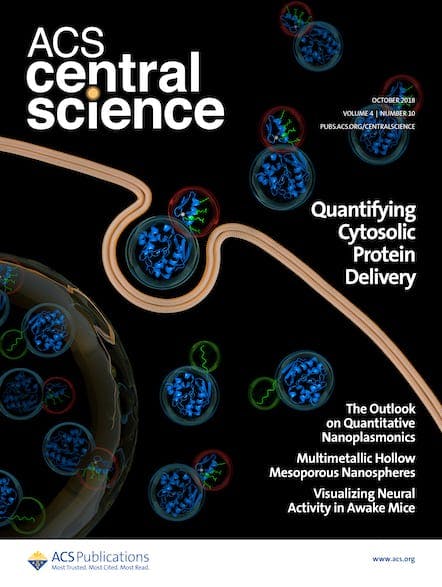Stanford doctoral candidate Mireille Kamariza helped make headlines last year, joining her adviser (and ACS Central Science Editor-in-Chief) Carolyn Bertozzi to present on a new test for diagnosing tuberculosis (TB) at the 252nd American Chemical Society National Meeting & Exposition in Philadelphia. Improved TB testing could make a huge difference in the lives of millions […]

Stanford doctoral candidate Mireille Kamariza helped make headlines last year, joining her adviser (and ACS Central Science Editor-in-Chief) Carolyn Bertozzi to present on a new test for diagnosing tuberculosis (TB) at the 252nd American Chemical Society National Meeting & Exposition in Philadelphia. Improved TB testing could make a huge difference in the lives of millions of people around the world, as more than 10 million new cases of TB were reported in 2015, and almost 2 million people died of the disease.
ACS Axial reached out to Mireille Kamariza to discuss her work, her ties to ACS, and what she’s learned from working with Carolyn Bertozzi:

The current methods for direct detection of TB rely on half-century old protocols that require extensive processing steps. As a result, the sensitivity of these methods varies radically depending on the exact method and how skilled the technicians are. In our lab, we have recently developed a dimethylaminonaphthalimide trehalose conjugate, termed DMN-Tre, that is able to specifically detect actinomycetes, which include Mycobacterium tuberculosis (Mtb), the causative agent of TB. This compound quickly gets processed and incorporated into the cell’s outer membrane in a simple and rapid manner. Additionally – in contrast to bulk staining protocols – DMN-Tre labels a specific component of the cell wall, which greatly increases its specificity. It also is selective for live cells over dead cells, which can help monitor patient response to treatment.
Since undergraduate school, I knew I wanted to study an infectious disease in my graduate career. When I was an intern at ACS in D.C., one of my assignments was to research the speakers of the 2012 ACS meeting in San Diego, which included Carolyn Bertozzi who was the [Kavli Foundation lecturer] that year. During this assignment, I learned a great deal about Carolyn’s path to success and what her lab worked on at the time. It was a bonus that she had projects on TB, which aligned well with my interests. I felt very inspired and became interested in working with her on one of the TB projects.
I had a very fruitful conversation with an outstanding chemistry graduate student in the lab, Dr. Peyton Shieh. He had extensive experience in fluorophore chemistry and had previously worked with a former post-doc to design bacterial probes. At the time, I was exploring new directions to take with my TB project and decided to have a chat with Peyton. Through our conversation, we realized the scarcity of reagents for the simple detection of mycobacteria, especially for the diagnosis of TB and thought of a new fluorogenic trehalose that could potentially label cells much quicker, with less processing time. To our happiness, the probe worked exactly as we hoped on the first trial!
I first heard of Carolyn while at ACS in DC. During that time, I was also interviewing for graduate schools so I chose to attend UC Berkeley. Ever since I joined her lab, I’ve learned a great deal! The Bertozzi Lab is highly interdisciplinary but we all have one goal: use chemistry to solve or improve our understanding of biological systems. One of the things I have learned being in this environment is that diversity of expertise makes us smarter! Of course, Carolyn is an exceptional adviser and I continue to learn from her everyday.
At the moment, I’m working on testing the efficacy of DMN-Tre in clinical settings in low-resource areas. We plan to quantify its sensitivity and specificity, and compare its effectiveness to currently used stains for TB diagnosis.
I hope DMN-Tre will prove effective for TB diagnosis and will nicely complement currently used smear technologies. I would be particularly proud if DMN-Tre can be used to monitor treatment response in TB patients. Given that millions of people worldwide currently have TB, if our technology can help advance TB diagnosis/treatment for just a little bit, I’ll be very happy with it.
